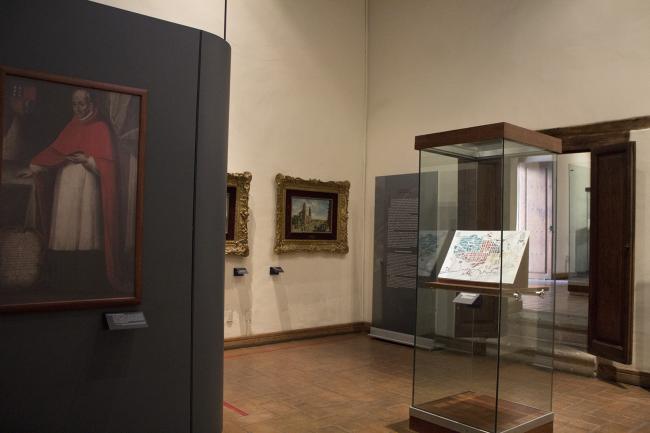
Valladolid and the Former Diocese of Michoacán
Sala
In the early 1530s, Viceroy Don Antonio de Mendoza set out on a journey through Michoacán, during which he explored the hill and valley known as Guayangareo. The site offered excellent natural conditions, prompting the idea of founding a Spanish city there. On April 23, 1541, the viceroy signed a decree ordering that “the said city of Mechuacan” be established in Guayangareo. It wasn’t until between 1586 and 1590 that the settlement, now known as Morelia, changed its name to Valladolid de Michoacán, and the episcopal seat was officially transferred there from Pátzcuaro.
For many years, Valladolid remained a small town with a primarily ecclesiastical character. It was inhabited mostly by clergy, nuns, and friars, with only a few Spanish families, many of whom relied on an increasing number of enslaved Africans. At the beginning of the 18th century, both its religious and civil buildings were still modest. Indigenous populations had been resettled on the outskirts of the city, far from the urban core, and wealthy merchants, landowners, and civil authorities of the Michoacán "alcaldía mayor" continued to reside in Pátzcuaro.
The turning point came in 1705 with the consecration of the new cathedral. From that moment, Valladolid began to grow, characterized by impressive buildings made from pink quarry stone, with the cathedral as the centerpiece of a new urban vision. Although its towers and façades were not completed until between 1738 and 1745, the cathedral's construction and eventual completion marked Valladolid’s rise as the most important city in the diocese. By the 18th century, it had become the episcopal seat of the third largest, wealthiest, and most influential diocese in all of New Spain.


